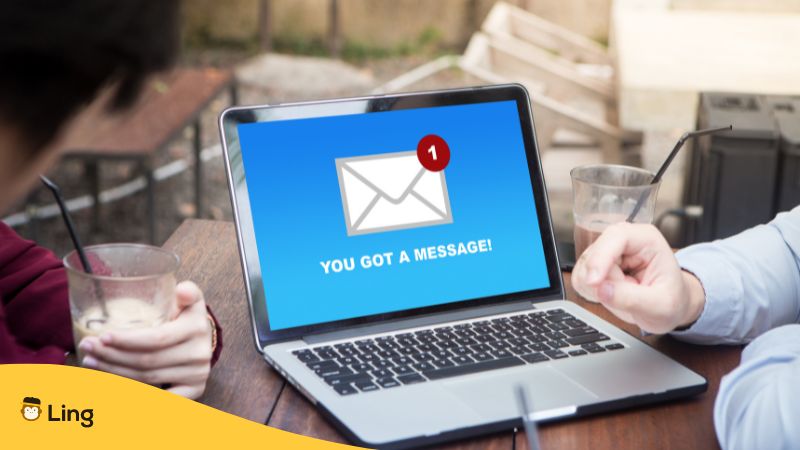An email or (e-mel in Malay) is made of basic 4–5 steps. The first would be the subject line, next is the greeting or salutation, then the body, and finally, the closing lines. If you are interested in making a kick-ass formal email in the Malay language, you might want to read on. Let’s look at Malay email phrases to make a brilliant and professional email!
A formal email in Malay means serious business. Unlike casual emails to friends and families, a business email to other individuals in Malaysia must be written formally, even/especially if it is addressed to a stranger.
For example, you should start with Dear Mr./Ms./Sir, and so on, which in Malay would be Selamat Sejahtera Prof/Dr/Tuan/Puan/Cik. Following this is your greeting, Selamat pagi (good morning), Selamat malam (good night), or others.
You should also know that short forms or shorthand are not considered polite and formal for Malaysian emails. Examples of these words are jgn, utk, and mkn which mean do not or don’t, for, and eat, respectively. You can see that these wouldn’t look very professional alongside your Malay email phrases.
Then we have, Manglish. Mixing Bahasa Melayu and English is informally called Manglish in Malaysia, and it’s not a good idea to use it while writing your emails. All caps or double question marks and exclamations are not correct either. And finally, resist the urge to add your emoticons!
Steps For Writing An Email
Here are the steps for writing a really good email.
- Use a professional email address and make sure the receiver’s email is correct.
- The subject should be clear and concise. Give an idea of what the email holds.
- Always begin with a positive greeting. This goes a long way for both formal and informal emails.
- Provide a background of the email. Your writing may be related to something or inquiring about something, and you should let the reader know.
- Wordy emails are not fun to read! Make sure to state the core purpose of what you’re writing.
- Now, it’s time for CTA or Call To Action. If your email should result in some kind of action, be it a reply, call, meeting, purchase, and so on, this is where you mention it.
- Add a closing remark. This could be a good night or Selamat Malam.
- If you are writing for a company, or in general, it is always good to add your signature, details on how to reach you, and perhaps the company address.
Examples Of Subject Lines
Your subject needs to be like a trailer is to a movie! If it’s interesting, we watch the movie. If your subject is interesting, the email will be opened, read, and replied to promptly.
Let the following phrases help:
| English | Malay Email Phrases |
| Meeting Request: Urgent Action Needed | Permintaan Mesyuarat: Tindakan Segera Diperlukan |
| Invitation to Virtual Networking Event | Jemputan ke Acara Rangkaian Maya |
| Introducing Our New Product Line | Memperkenalkan Barisan Produk Baharu Kami |
| Project Update and Next Steps | Kemas Kini Projek dan Langkah Seterusnya |
Malay Greetings

Depending on who you are writing to, you could greet them with the following examples:
| English | Malay Email Phrases |
| Good morning | Selamat pagi |
| Good afternoon | Selamat petang |
| Good day | Selamat hari |
| Hope this email finds you well | Semoga e-mel ini menemui anda dengan baik |
Malay Phrases For The Background & Email Body
To write the email body, you will need to choose simple sentences. Jargon is not always appreciated, especially if you are writing to this person for the first time. Try these phrases instead:
| English | Malay Email Phrases |
| It was a pleasure to meet you | Saya gembira bertemu dengan anda |
| Your research was impressive | Penyelidikan anda sangat mengagumkan |
| We received your resume for the post | Kami menerima resume anda untuk jawatan tersebut |
| I am writing regarding the | Saya menulis mengenai |
Malay Phrases For CTA

When you are writing for some kind of reaction, this is where you invite the receiver of the email to do something as a result of reading it:
| English | Malay Email Phrases |
| Click here to learn more about our product! | Klik di sini untuk mengetahui lebih lanjut tentang produk kami! |
| Sign up now to get exclusive discounts! | Daftar sekarang untuk mendapatkan diskaun eksklusif! |
| Download our new app to get started! | Muat turun apl baharu kami untuk bermula! |
| Schedule a free consultation today! | Jadualkan perundingan percuma hari ini! |
Malay Phrases For Closing Lines
To finish up your email, here are some useful phrases for you:
| English | Malay Email Phrases |
| Have a great weekend | Selamat berhujung minggu |
| Look forward to hearing from you | Berharap untuk mendengar daripada anda |
| Have a good evening | Selamat petang |
| Best regards | Selamat sejahtera |
| Warm regards | Salam mesra |
And remember, a well-addressed email leaves a long-lasting impression.
If you have found the article helpful, make sure to drop a comment. You can find many more articles related to the Malay language or Malaysia in the Malay blog.
Learn Malay With Ling

If you’re looking to learn Malay due to business or pleasure, try the Ling app. It is a great app for learning Malay because it offers an interactive and comprehensive approach to learning the language. There are audio and visual lessons, quizzes and exercises, and audio-based activities to help users learn how to speak, write, and understand Malay.
The app also has a built-in dictionary and phrasebook, allowing users to look up words and phrases and quickly learn their meanings. Plus, Ling provides virtual tutoring and in-app chat support from native Malay speakers, making it a great way to practice conversational Malay.
Even if it’s just to explore the beautiful land of Malaysia, it is wise to know some words of the local language to make it an engaging experience. Try the app today, and you will not regret it! Download from the Apple Store or Google Play Store now!






























































